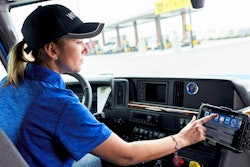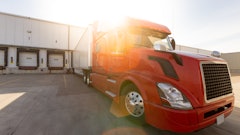
When the Coronavirus disease (COVID-19) hit, many facets of the supply chain experienced disruption. Restaurants closed, some permanently. Excess food went to waste. E-commerce boomed, further fueling the “Amazon Effect.” And, the ever-present driver shortage gap transformed into an overall industry-wide labor shortage issue.
However, despite all of the hiccups and disruptions, trucks kept on truckin’.
In Food Logistics’ August 2021 issue, editor-in-chief Marina Mayer talks with several industry experts about how the global 3PL market continues to play a pivotal role in how and why Americans receive essential goods in a safe and timely manner.
Here’s an interview with Rock Magnan, president at RK Logistics Group, with excerpts publishing in Food Logistics’ August 2021 issue. [CLICK HERE to read the article in full].
Food Logistics: The 3PL market is set to grow to become an over $1.8 trillion sector by 2026, according to Global Market Insights, Inc. From your vantage point, what are some contributing factors to this growth?
Rock Magnan: As we have come out of the pandemic, people have money to spend. That creates demand. So many firms cut back on production during the pandemic, then found it extremely hard to ramp back up once demand returned. You’re seeing that across industries—challenges in hiring workers and in some cases shortages of components and raw materials. Semiconductors are a good example. As companies look to return to historical levels of commerce, they need warehousing and transportation. That’s good for the 3PL market domestically and globally.
In adjusting to changing markets, most manufacturers are reluctant to extend their own logistics capabilities. They’re focused on industrial output. That’s a window of opportunity for 3PLs. Particularly in the high-tech industry, where RK has a large presence, outsourcing to a 3PL is quite common. Food producers are in a similar situation. A 3PL insulates the producer from risk and provides a predictable cost. Another concern is that the big spike in demand for trucking and logistics we are seeing now is a bubble that will burst at some point. So, to protect myself, I want to outsource warehousing and trucking vs. expanding my own resources to avoid getting stuck when the supply chain bubble bursts.
Food Logistics: The transportation and supply chain industry continues to face supply chain disruption after supply chain disruption. How is your company working to overcome these challenges? (Think technology, re-training drivers, etc.)
Magnan: The biggest disruption is around labor and facilities. Staffing is always an immediate concern. We decided to take our wages above market to try and attract the best talent and keep the talent we have. In a constrained logistics market, if you have staff, you can grow. If you can’t attract and keep staff, you won’t grow and you risk losing existing clients due to inability to serve.
So, we’re willing to pay top rates for quality people. While there is more and more automation going into warehouses, you still need people. Capacity is king. Customers are willing to pay for capacity. And, as a 3PL, we can stand up a site and bring on staff faster and more efficiently than someone trying to do it on their own. Capacity is about forward planning and getting ahead of the game. You cannot wait for the opportunity; you must prepare for it.
Food Logistics: What is your company doing to meet last mile demands in the cold food chain?
Magnan: The opportunity is there, again, if you can build capacity in that market, you will find demand for it. If you can find underserved niches in areas like last mile, you can exploit it. Same with cold chain. The one who gets there first with the most reliable services and capacity is the one who will be able to capitalize on the best opportunities.
Food Logistics: The driver shortage continues to plague the industry. What is your company doing to hire/retain drivers and/or attract new talent?
Magnan: Finding and keeping experienced, qualified, safe truck drivers is and will continue to be an ongoing issue. Older drivers are retiring. The industry is not producing enough new entrants to fill the gap. The key to keeping drivers is simple -- minimize downtime and maximize time behind the wheel and all available hours of service. Create a working environment where the driver feels valued and is getting fully compensated for their time. Reduce what takes away from their earnings, things like excessive paperwork, loading and unloading or waiting too long for the next load. Those firms that are easiest for drivers to work with and best utilize their time and skill will be the winners.
Food Logistics: To piggyback on this, what changes need to be made (whether it be government, technology, regulations, etc.) to turn this shortage around?
Magnan: We have spent so much time and effort working on driver safety and getting that right, whether it be drug testing, hours of service, training and support, that I don’t see the need for regulatory change. Refinements, yes; wholesale change, no. The driver shortage will spur a decade of innovation, particularly in trucks and automated driver assist systems. Smart vehicles won’t eliminate the need for drivers, but as technology advances and more self-driving and driver-assist features go into cabs, operating them may require fewer drivers overall or drivers whose skills don’t need to be as comprehensive as today’s.
Food Logistics: Driver safety is also of top concern. What is your company doing to ensure driver safety?
Magnan: As an industry, we have made great strides in the past decade to improve driver safety and reduce incidents. That has been a combination of regulations, better driver training and monitoring and technology. As trucks adopt more driver-assist systems, I think those will bring improvements that will make the physical and mental demands of driving a truck easier and will lead to even safer operations.
Food Logistics: How does something like the COVID-19 pandemic affect the way 3PLs operate?
Magnan: We all learned how to adapt, especially since logistics is an essential industry. We implemented equipment, tools and new practices to keep workplaces clean and employees protected and safe. As we put those activities in place, we continued to work right through the pandemic. And, we never closed. One unintended positive consequence of the pandemic was that non-COVID sick days are at an all-time low. We are seeing far fewer employee sick days due to seasonal flus and workplace injuries. COVID has certainly been devastating to those families affected, but fortunately, our associates were diligent and really bought into the safety practices. Over the past year, we had a total of six COVID cases (out of a 500-person workforce). We detected them quickly, put them into quarantine and worked with healthcare officials to conduct contact tracing. We were gratified that all the affected employees recovered and are back to work. The key was diligence and constant communication on the part of our staff and excellent buy-in and support from our associates.
Food Logistics: What does the future look like post-COVID-19? What should companies be doing now to secure a stronger, more resilient fleet in the future?
Magnan: Many of the lessons learned during COVID will stay with us. Workplace sanitation, disinfectants, regular temperature checks, social distancing, good hygiene practices – those are now ingrained in how we work and will continue. That’s important not just to be prepared for a potential resurgence of COVID or new strains, but to help ensure worker health during the regular flu season. Those lessons will help us maintain a healthy workforce going forward.
Food Logistics: What are some things not addressed above that may be pertinent to our readers?
Magnan: Know what makes a good 3PL. Right now, with the staffing and space shortages and the rising costs of both, you must be proactive and not reactive in how you plan for, design and implement your logistics operations. Think ahead of the game. Demand for logistics and transportation services will likely remain high well into next year. Those businesses who can plan with a longer-term view will have the most success acquiring the logistics resources they need. For 3PL, focus on two things -- be agile and flexible in creating and delivering customer solutions, but build them on your proven experience, competencies and capabilities. That’s the key to long-term success in any market.
[CLICK HERE to read the article in full].



















